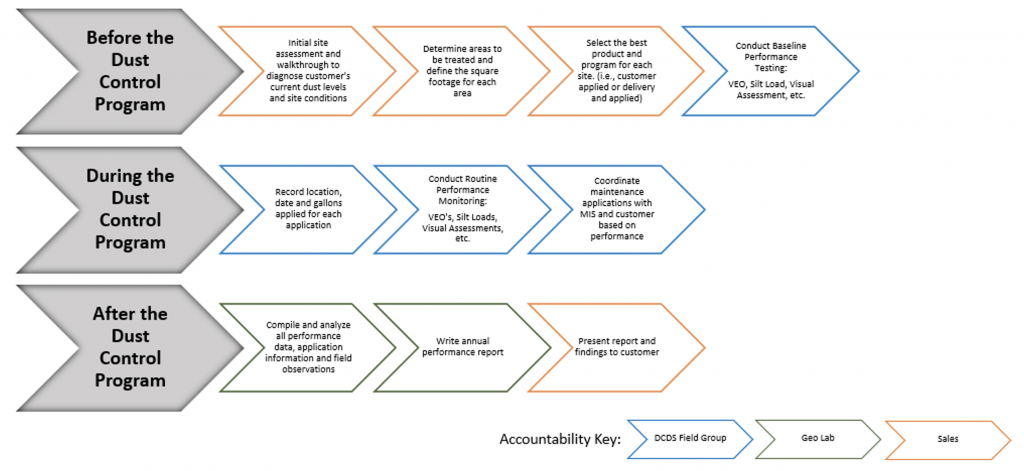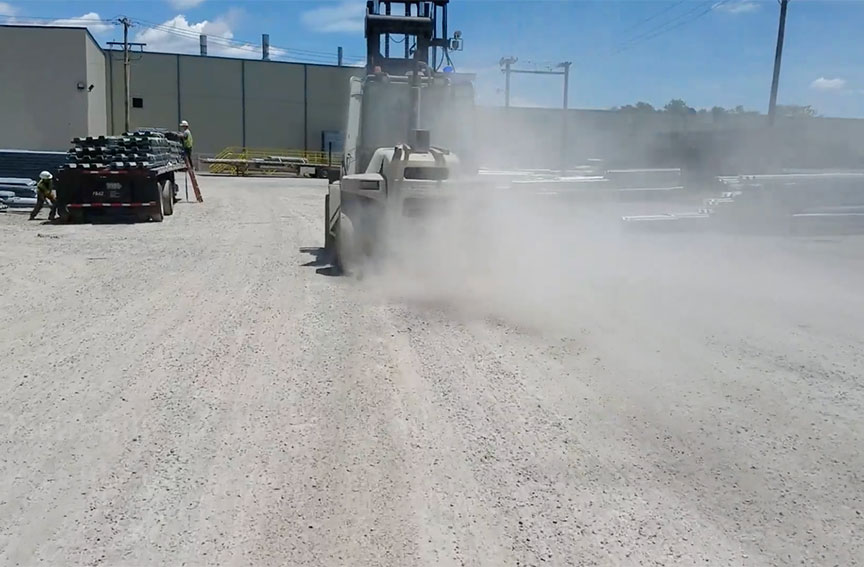The Money Question: Cost Per Gallon Versus Cost Per Square Foot
Most operators and managers responsible for a dust control program focus on the price per gallon when pricing their facility dust control solutions. But this logic can result in paying more for a dust control program.
If a $20/gallon product only needs to be applied once a week to achieve the desired result, but a $10/gallon product needs to be applied every other day, which one costs more? Assuming a comparable coverage area per gallon (which is also something that can vary, affecting overall cost), it essentially takes three (3) gallons of the cheaper product to achieve what one (1) gallon of the more expensive product can do. That makes the cheaper product 50% more expensive.
We invite you to view things anew: look at the cost per square foot. Based on the site-specific information you provide Midwest, we calculate how much product will need to be used over a given area and what the application rate will need to be to hit your specific objectives. Once we know the amount of product needed and how long it will last in a given square foot, we can price your facility dust control program based on results (the amount of space where dust control has been effectively achieved).
Once we start implementing your program, we then track how it’s performing to prove the value to you.
Measuring Results: A Proven System Based on a Smart Facility Dust Control Strategy
Of course, our facility dust control program program wouldn’t be scientific if we didn’t have a way of measuring and tracking results. Midwest has a suite of tools we use to evaluate the success of any given efforts. We use these tools before the program to establish a baseline and during the program to monitor and tweak rate of application. Once the program has been implemented, we then demonstrate results.
The tools we use include the following:
- Stationary motion cameras
- Silt load testing
- Stationary dust monitoring
- Visual emissions observation
- Visual surface condition assessments
- Qualitative evaluations of dust emissions
(For details of what these tools entail, including what certified processes they use to stay compliant with government regulation, check out our article on how to measure dust on roads.)
Putting the entire process together, here’s how we run a facility dust control program for our managed service clients: [for better readability, download this graphic]

Our goals with this program are to:
- Provide credible evidence of performance
- Improve the efficiency of the dust control program by strategically planning maintenance applications supported by field data and observations
- Quantify and document the value delivered by the Dust Control Down to a Science program
- Verify that you have met the requirements of your Title V permit
Setting up our program this way also means that we’re able to deliver to you a guarantee of future performance. To know how your dust control program will affect your operation going forward, you need three pieces of information:
- The first is the target control efficiency. This determines how much product will be used based on that product’s chemical makeup, the condition of the road to which it is being applied and the desired outcome.
- The second is the duration of time. This is a realistic expectation of how long a product’s effects should be expected to last.
- And the third is the cost per square foot, which we discussed above.
Knowing these three pieces of information mean you can plan, knowing how much product (plus manhours and equipment for application) will be needed each season, allowing you to plan for the cost, both financial and time. This creates a predictable budget — something that is almost impossible to do when you’re simply using a mostly ineffective off-the-shelf dust control product.
Put Midwest to the Test
What’s the point in transparently laying out all the details of our Dust Control Down to a Science program? Even if you don’t choose to work with Midwest, we still want to shake up the thinking in our industry. We hope that your takeaway from content like this is to rethink everything you thought you knew about the dust control industry — to reconsider some of the biggest myths still prevalent today (check out the five biggest dust control program myths we’ve seen) and to bring some new ideas into your planning. We hope you’ll take some of the ideas we’ve talked about and put them to the test. Then, if you’re ready, reach out to us, and we’ll schedule a trial so you can see the types of results we can get for you with a full facility dust control program.

